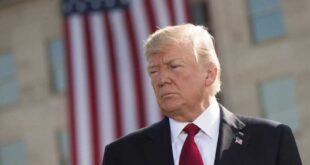We have witnessed time and again that intelligence deficiencies have extracted exorbitant costs from New Delhi. Be it the 1962 war against China or the 1999 conflict with Pakistan, intelligence paucities have come to bite New Delhi in the back.[1] This has frequently led to calls in India for a renewed approach. These include demands for cooperation with the Five Eyes, but historical hesitations and mutual concerns stopped the idea from sprouting.
However, the sands are shifting. Contemporary dynamics in the Indo-Pacific region along with India’s new dynamism in the QUAD, perhaps, makes the time for cooperation ripe.
Observers have noted that the fundamental selling point of joining or cooperating with the Five Eyes for India is twofold. Cooperation would significantly boost India’s capabilities in tackling its perennial challenges: Cross-border infiltration and terrorism emanating from Pakistan. Second, Chinese incursions and development activities along the Himalayan frontier.[2]
Other incentives include increased intelligence sharing along with access to state-of-the-art intelligence technology. This is coupled with the prospect of deepening bilateral and plurilateral military engagement with United States, United Kingdom, Australia, New Zealand, countries who have direct interests in the Indo-Pacific region.
Five Eyes-India intelligence cooperation can immediately take form by supporting the annual MALABAR and Tiger Triumph maritime exercise series along with integrating navies of like-minded partners in the future.[3] Following the recent announcements by the QUAD leaders[4], such maritime intelligence cooperation also presents opportunities in the fields of Maritime Domain Awareness and security operations in the region.
Other potential areas of collaboration that would assist India could be surveillance, tracking and interception of terrorist activities along with joint intelligence collection operations against illicit arms transfers, piracy, drug/human trafficking and illegal fishing.[5]
India should seek cooperation with the Five Eyes on the lines of established partnerships with countries like South Korea, Singapore and Japan. Other frameworks for cooperation include new affiliate groupings under the Five Eyes, like the Nine Eyes and the Fourteen Eyes.[6]
However, the idea of close cooperation between India and Five Eyes is not new. In 2008, India was invited to join the “Fourteen Eyes,” an extension of the Five Eyes arrangement. However, this initiative was watered down due to mutual suspicions.[7] While India’s bilateral intelligence sharing with the United States has grown in the recent years due to the common China factor, some instances in the past act as barriers. An example includes India’s consternation at the US for withholding crucial intelligence before 26/11 terror attacks.[8] This has caused hiccups for deepening cooperation.
There have also been privacy concerns around the breadth and scope of operations conducted by the Five Eyes. The large-scale electronic surveillance conducted by the grouping has also compromised the privacy rights of even the citizens of Five Eyes partners.[9] An additional apprehension that pops up is potential usage of surveillance technology by the provisioners themselves, as experiences of Indian institutions being monitored by the American agencies have shown in the past.[10]
Another factor which inhibits close cooperation between India and the Five Eyes is the engrained deficits of India’s own intelligence community.[11] Such chronic deficiencies don’t leave India with much capabilities to offer to the member countries of the Five Eyes alliance. A few of these deficiencies include outdated curricula and training practices, poor technology staffing, woeful financial resources and understaffed intelligence agencies.[12]
India and Five Eyes, is a possibility alive?
The strategic objectives of the Five Eyes have undergone a gradual shift in the post-Cold War era. Some objectives of the last two decades include the war on terror and perceived challenges from China and Russia as regional powers with their own spheres of influence.[13] This has led to incessant calls for Five Eyes to venture beyond the Anglosphere in potential collaborations and partnerships.
The United States recognises India’s heft and growing salience in the Indo-Pacific region. With its geostrategic location, size, economic and military potential and established historical engagement in South Asia and Indian Ocean littoral states, India is indispensable for any coalition of like-minded countries which respects the rule of international law and is concerned about Chinese ambitions in the region. Expressions of intent have already emerged from within the United States for expanding “the circle of trust to other like-minded democracies” which includes Japan, South Korea, India and Germany.[14]
It is worth noting that, during the last few years, United States has also doubled down on its keenness to deepen intelligence cooperation with India at a bilateral level. Serious proposals for a closer intelligence relationship were even put forth early in the first term of the current dispensation in New Delhi, when Richard Verma was the US envoy to India.
After weighing the costs and benefits of a partnership with the Five Eyes, it can be said that India’s strategic interests are better served by joining hands with the Five Eyes, in a partnership, if not as a formal member.
Like the resuscitated QUAD, which has found a new life thanks to Chinese ambitions, expansion of the Five Eyes also gains relevance in the Indo-Pacific theatre of strategic powerplay.
[1] Vinayak Dalmia, India’s Enduring Challenge of Intelligence Reforms, ORF Issue Brief https://www.orfonline.org/research/indias-enduring-challenge-of-intelligence-reforms/
[2] Mohamed Zeeshan, Could India join the Five Eyes? Lowy Institute https://www.lowyinstitute.org/the-interpreter/could-india-join-five-eyes
[3] Carol Evans, A vision for future US-India intelligence cooperation, The future of US-India security cooperation
[4] QUAD unveils satellite-based maritime initiative to counter China, Financial Times, https://www.ft.com/content/e6cae9a5-2ac8-42df-aac4-3bb58cb6a9e2
[5] Carol Evans, A vision for future US-India intelligence cooperation, The future of US-India security cooperation
[6] Chiaro Castro, Techradar https://www.techradar.com/in/vpn/five-eyes-nine-eyes-and-fourteen-eyes-explained-how-these-alliances-affect-you
[7] Saikat Datta, Natural Alliance: enhancing India-US intelligence cooperation, The future of US-India security cooperation
[8] Ibid
[9] Praveen Swami, Will India be joining the world’s most exclusive intelligence club? https://www.moneycontrol.com/news/trends/current-affairs-trends/will-india-be-joining-the-worlds-most-exclusive-intelligence-club-7684711.html
[10] Ibid
[11] Praveen Swami, Pegasus: India’s intelligence services are in midst of dangerous crisis https://www.cnbctv18.com/views/pegasus-indias-intelligence-services-are-in-midst-of-dangerous-crisis-10057691.htm
[12] Ibid
[13] Raghav Bikhchandani, The Print, https://theprint.in/world/what-is-five-eyes-the-intelligence-alliance-us-wants-south-korea-india-japan-to-be-part-of/730475/
[14] Raghav Bikhchandani, The Print, https://theprint.in/world/what-is-five-eyes-the-intelligence-alliance-us-wants-south-korea-india-japan-to-be-part-of/730475/
 Geostrategic Media Political Commentary, Analysis, Security, Defense
Geostrategic Media Political Commentary, Analysis, Security, Defense





